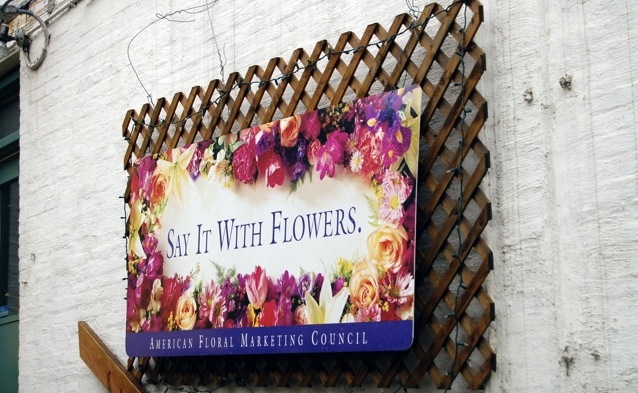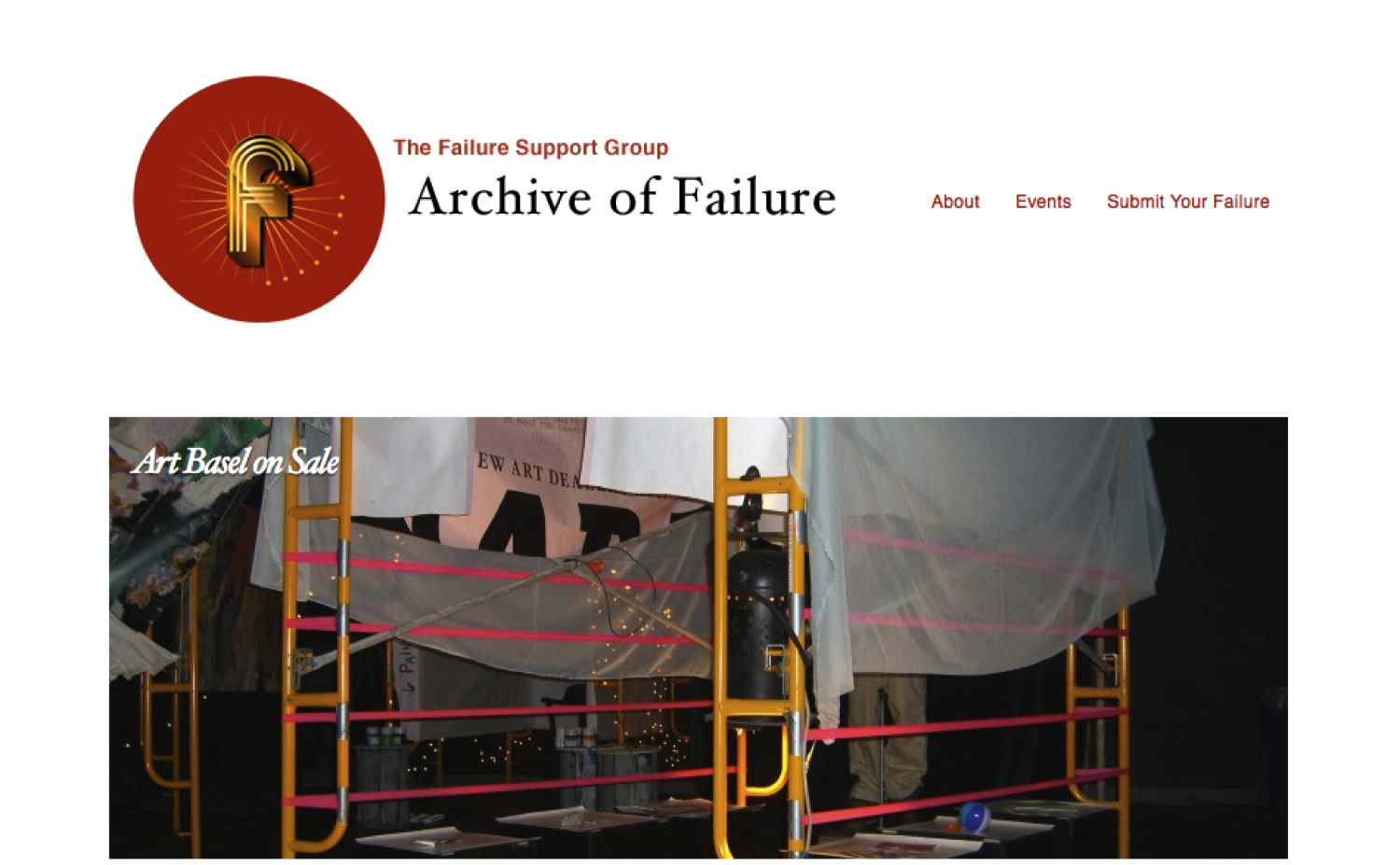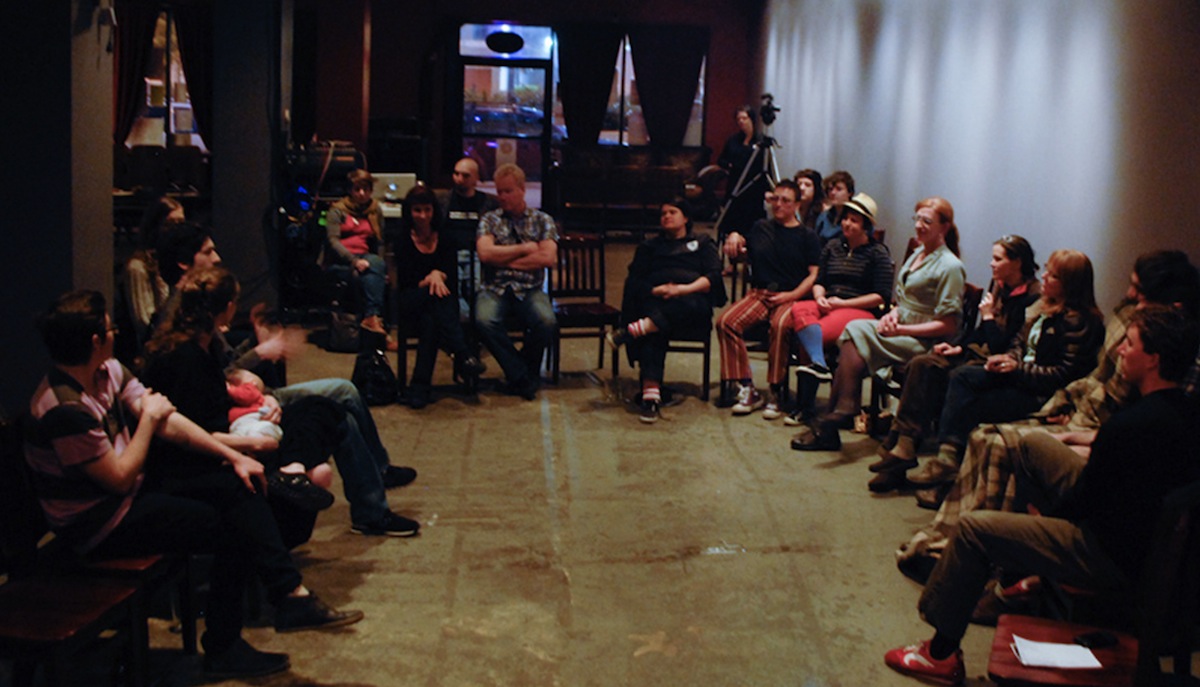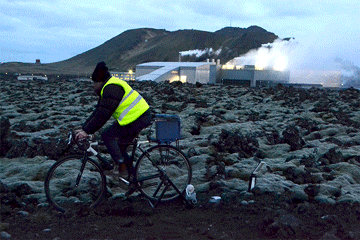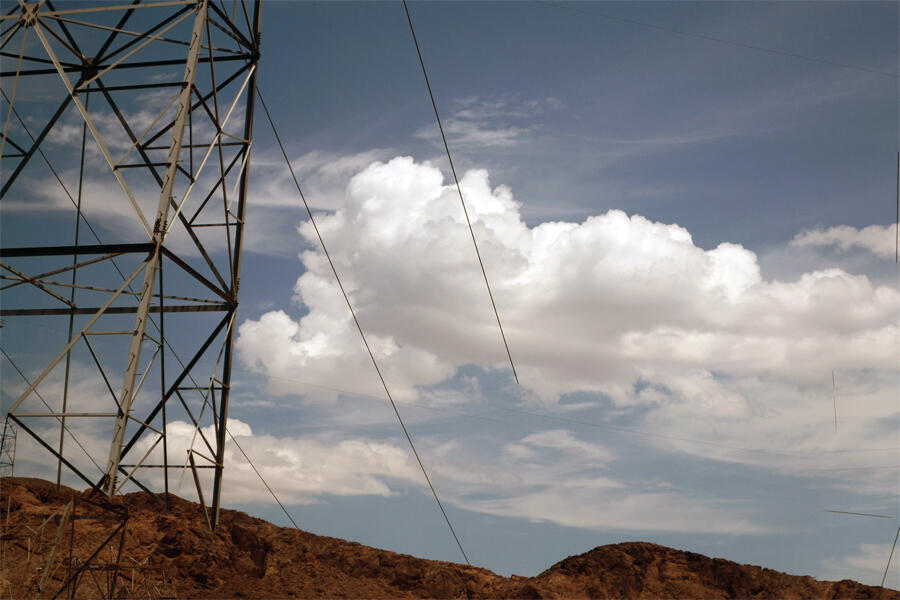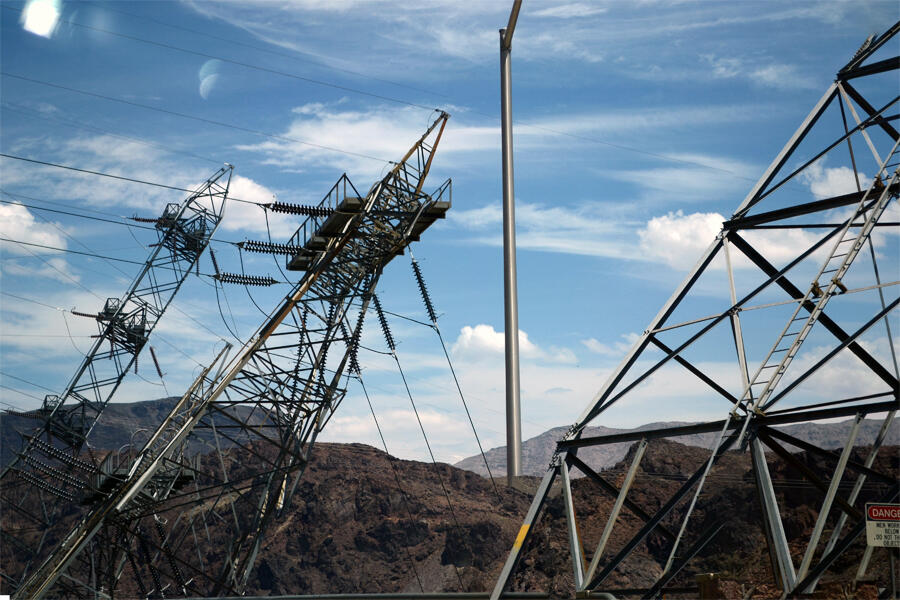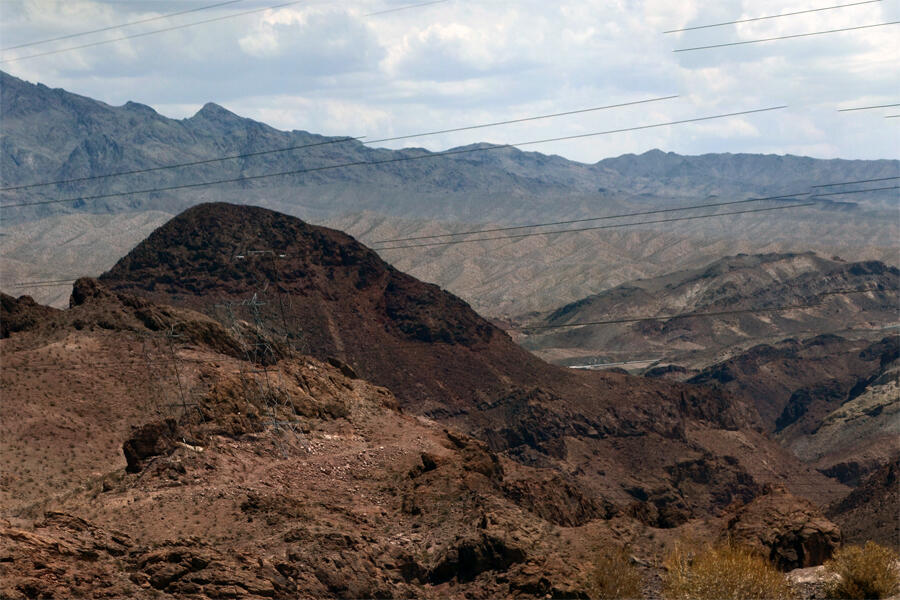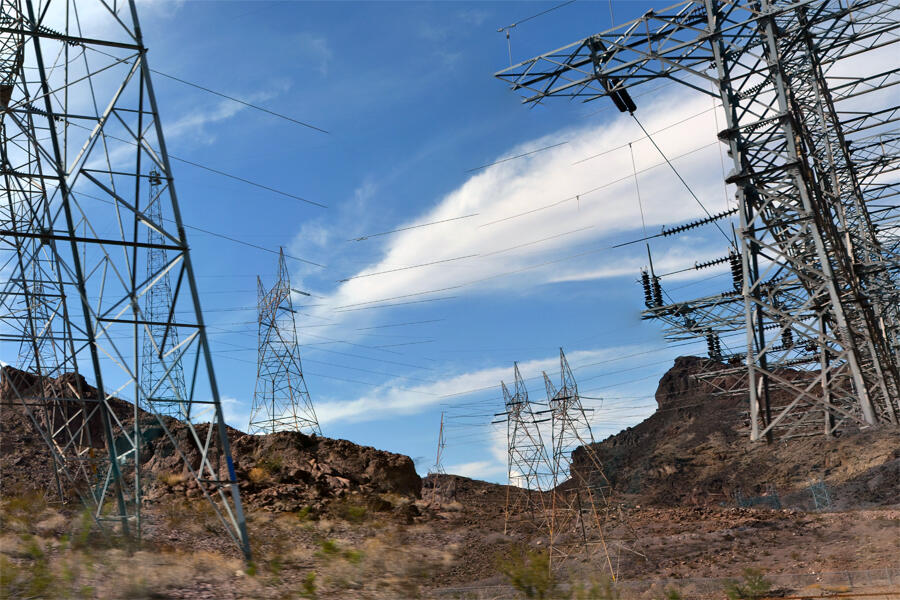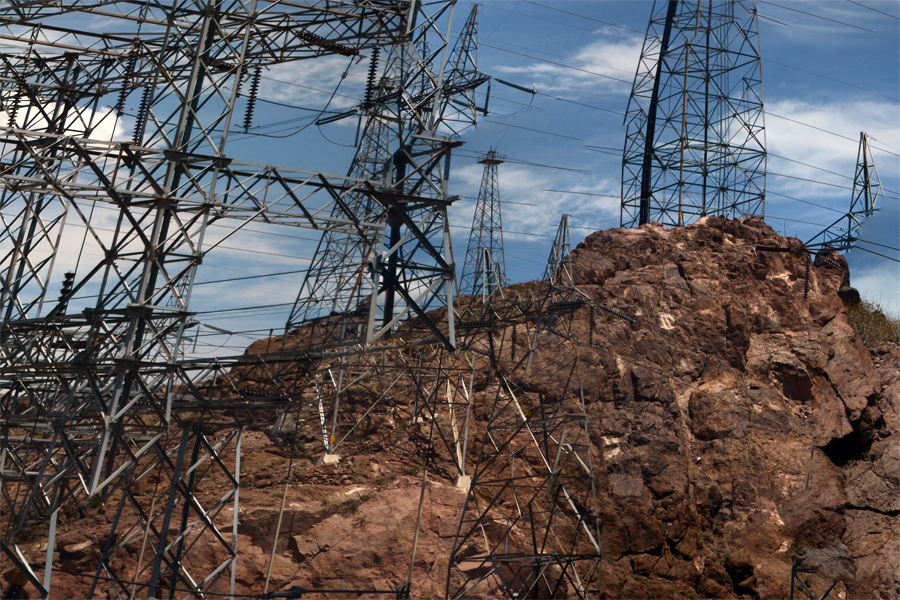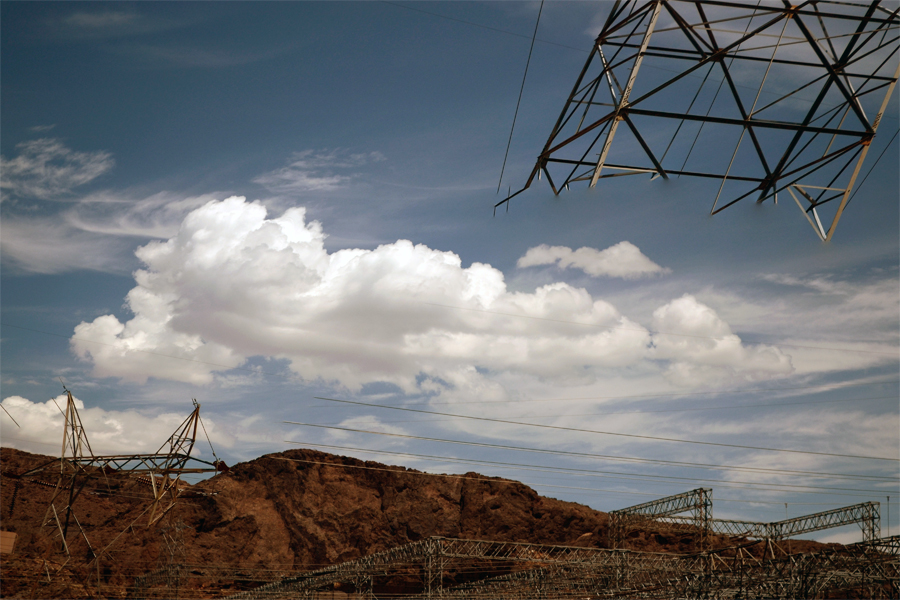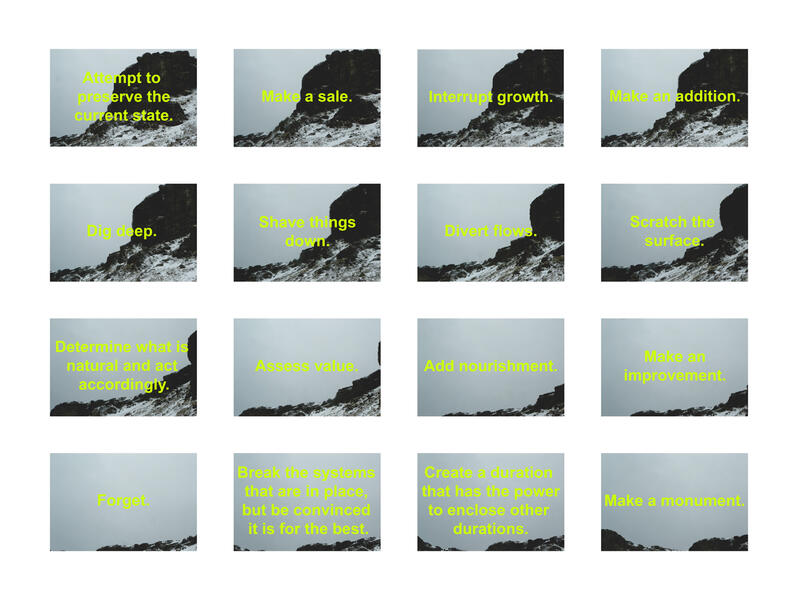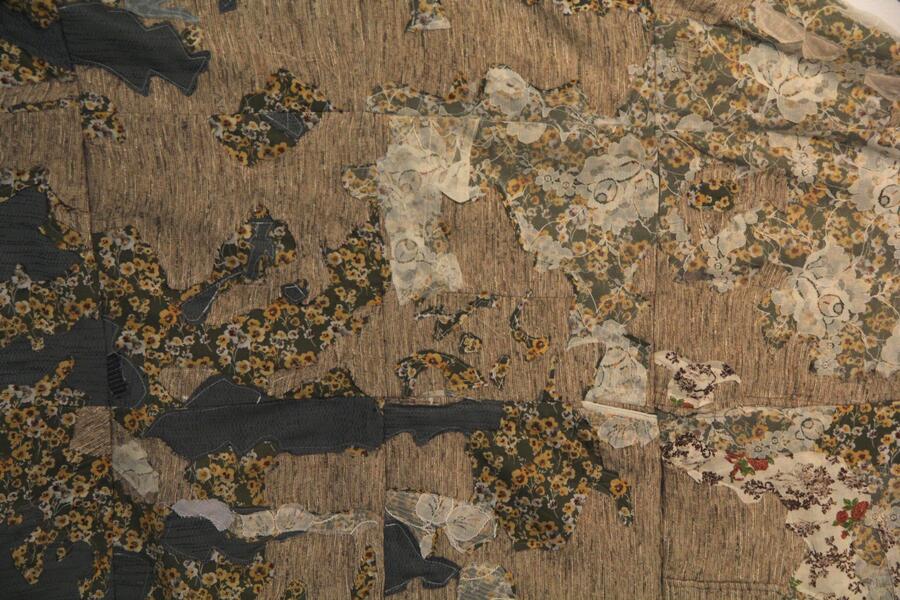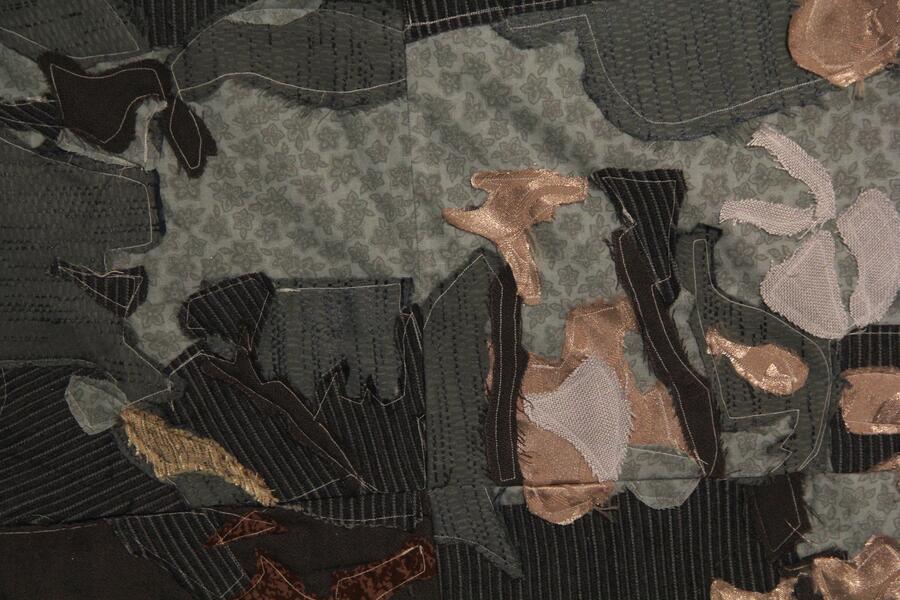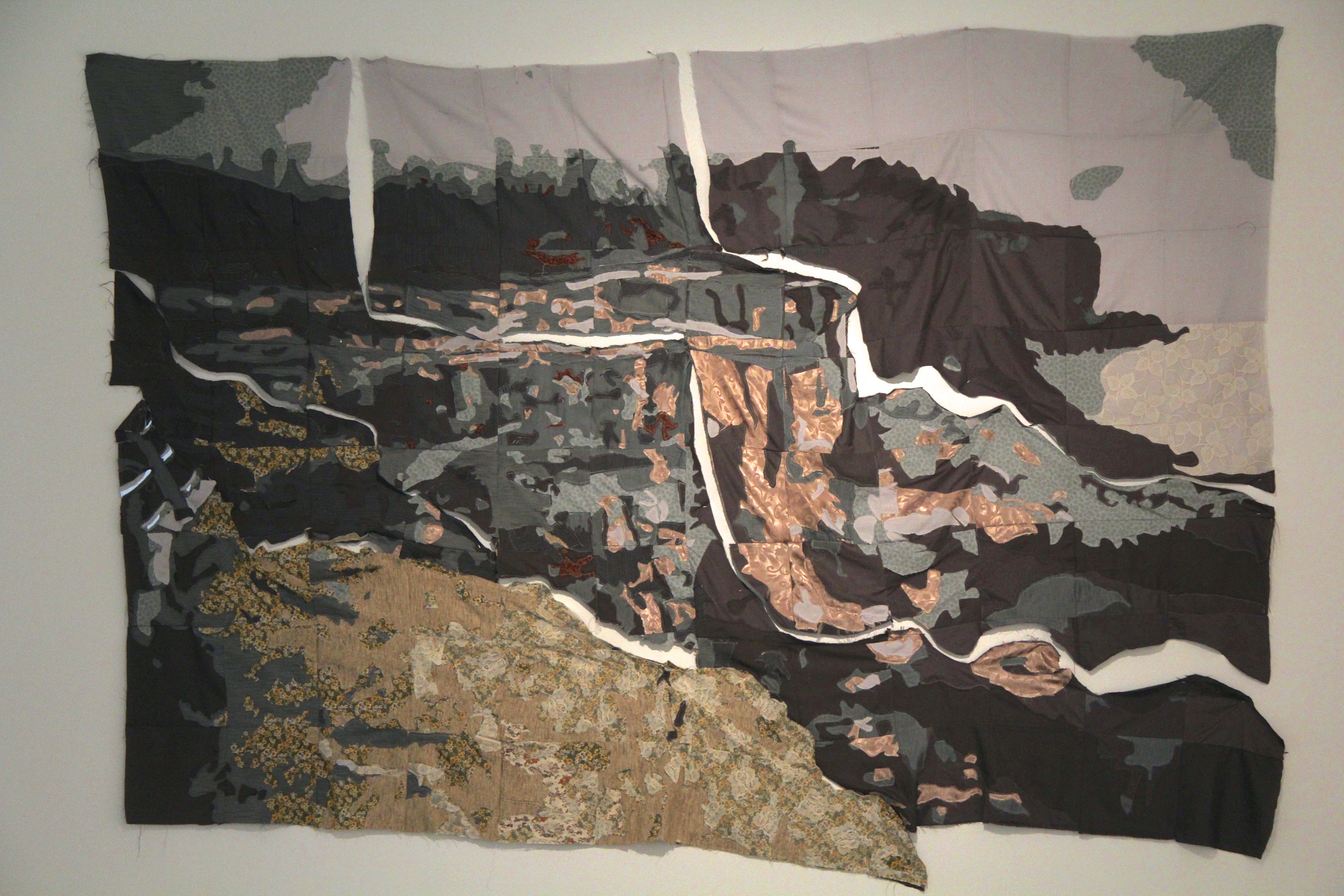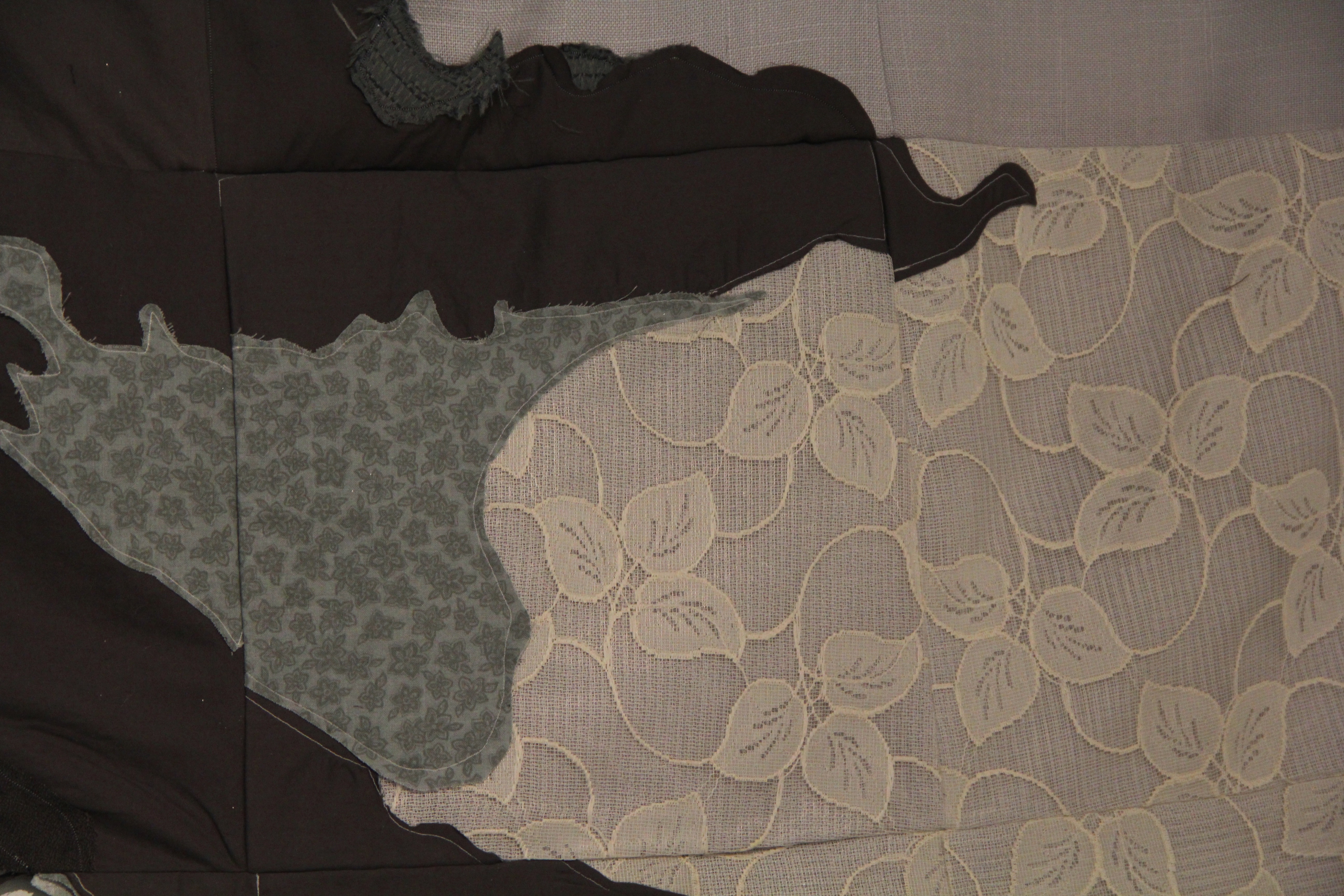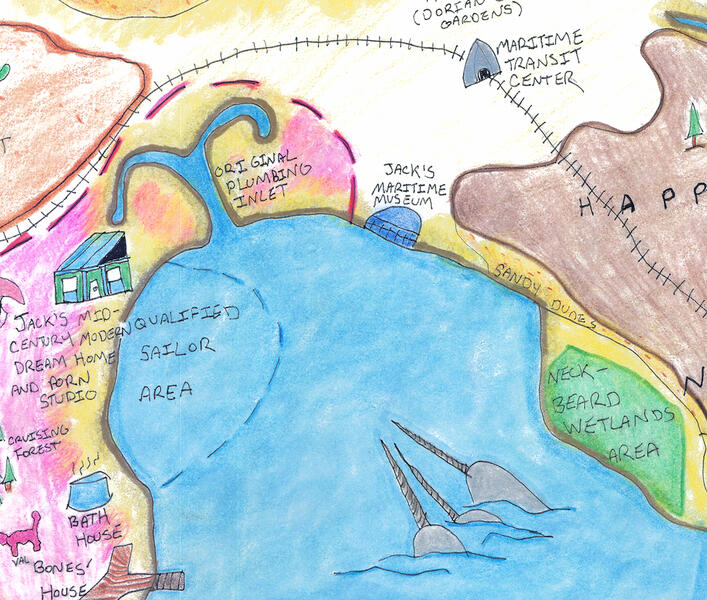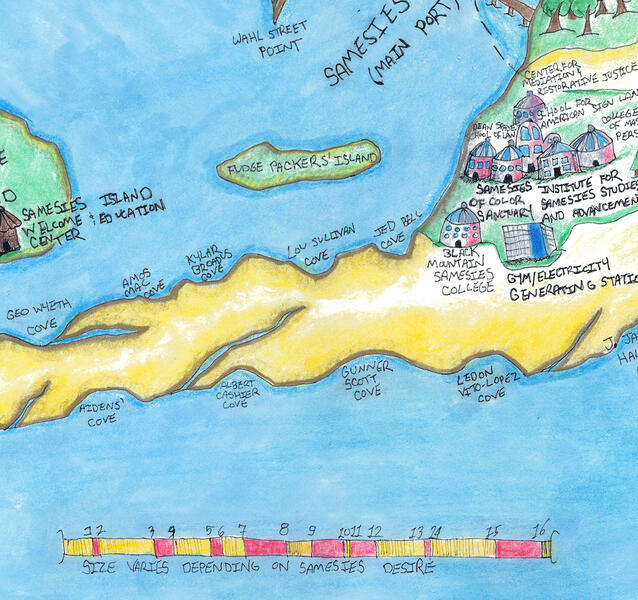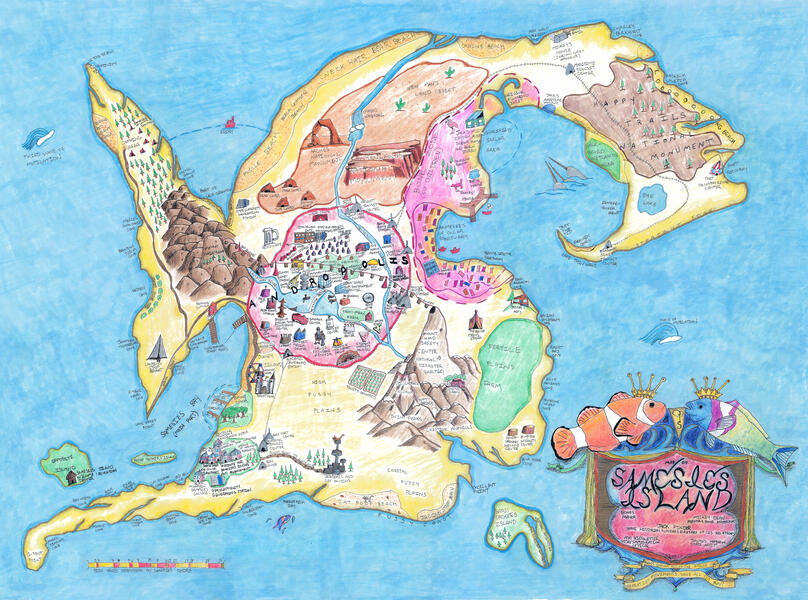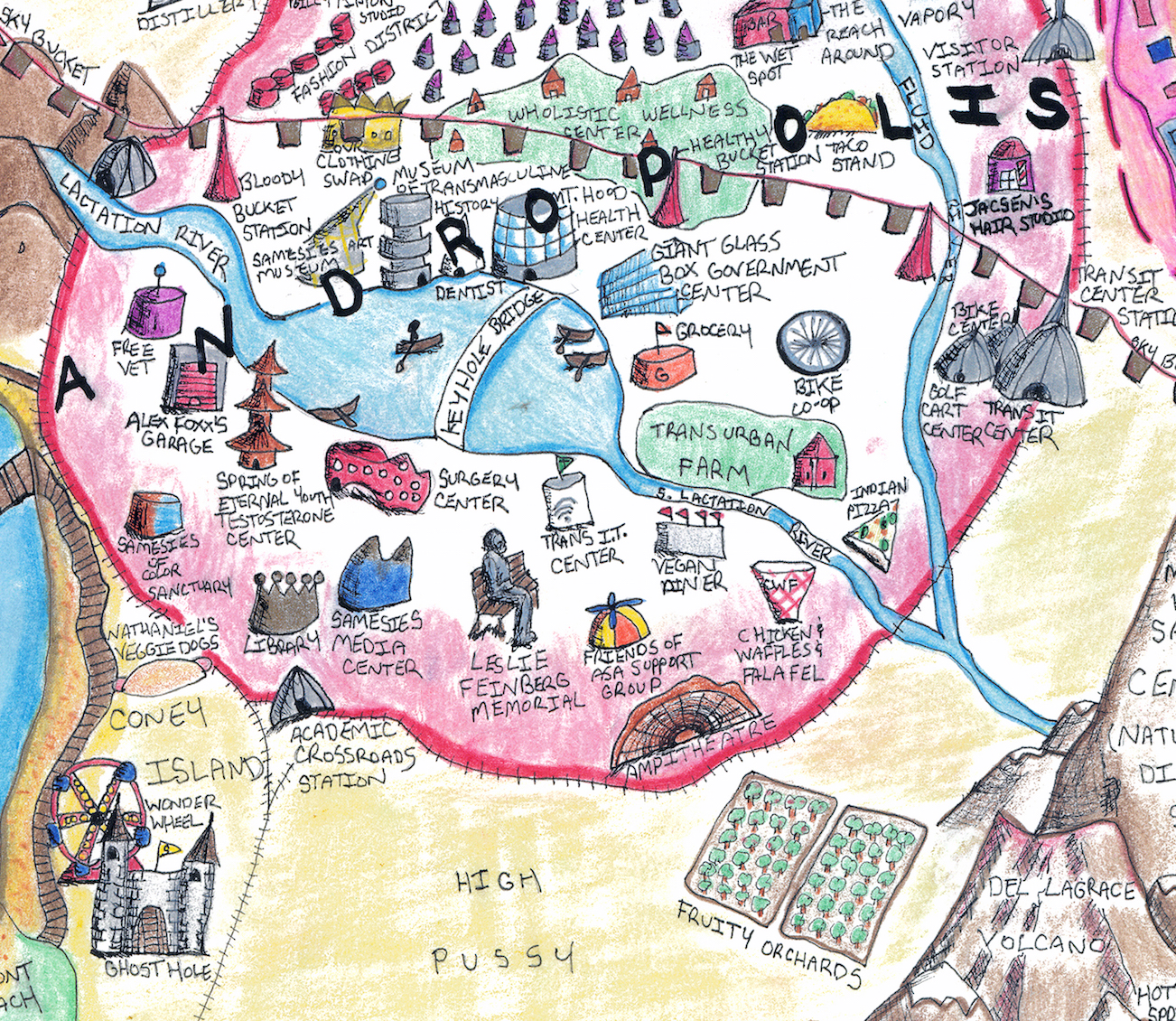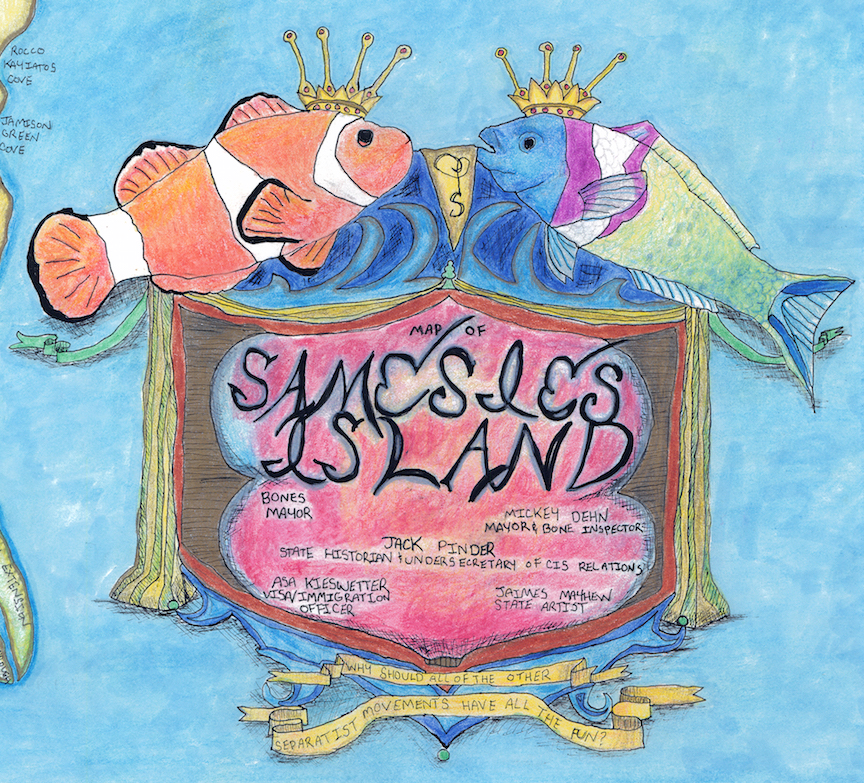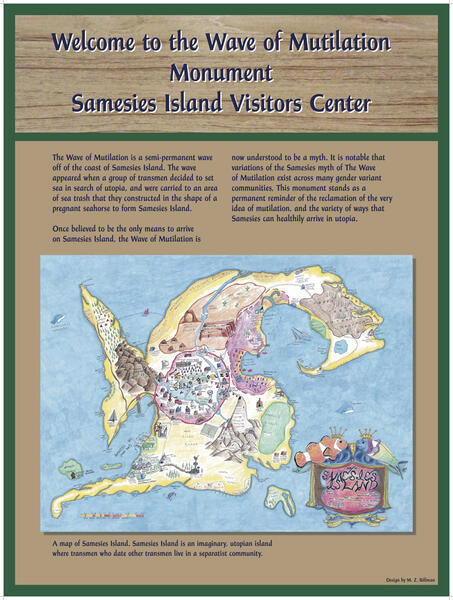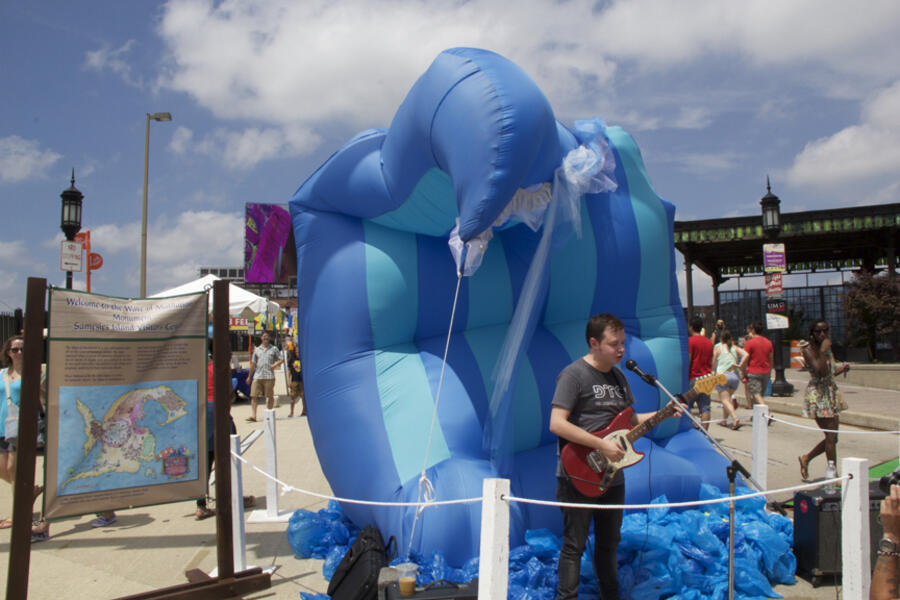About Jaimes

Jaimes Mayhew (b. 1979) is an artist, organizer and educator. His artwork is often collaborative, interdisciplinary, and based in conceptual research of social and cultural phenomena. His work has been shown both nationally and internationally, including Eyebeam (NYC), Goucher College (Baltimore), and Hoffmannsgallerí (Reykjavík, Iceland). He is the recipient of several awards including a Maryland State Arts Council Individual Artist Award (2015), a Fulbright Fellowship in Iceland (2011-12),… more
Jump to a project:
Various Projects
This is a selection of projects that did not fit into other categories ranging from the years 2006-2010.
-
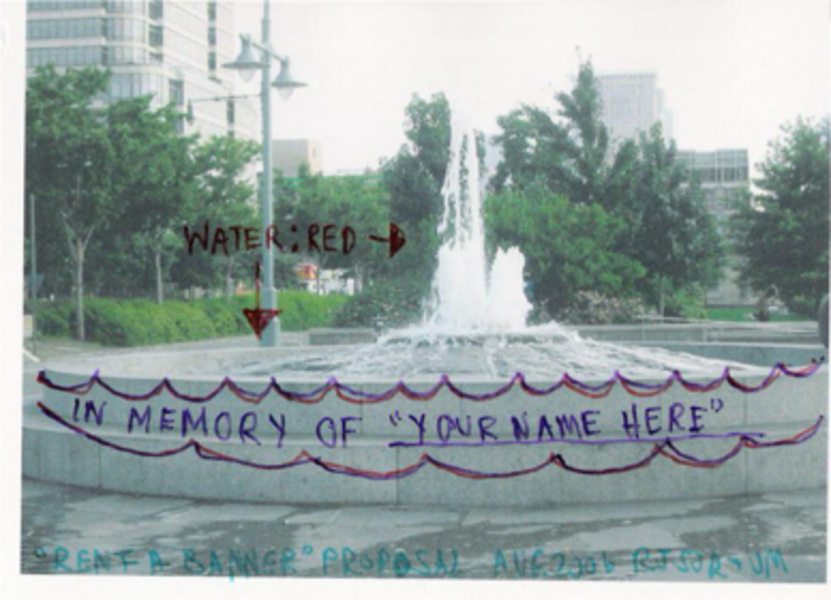 Things That Might Have Happened (detail)Things That Might Have Happened is an exploration of the past, present and future of the Chelsea Piers, specifically Segment 4, from Horatio Street to Clarkson Street, including the highly contested Pier 45, or the Christopher Street Pier. As part of the Conflux festival exploring psychogeography in New York City, Richard James Supa Jr. and James Mayhew chose to explore the uses of the pier, both past and present, and how people feel about the changes being made and what, if any changes should come to the area. Things That Might Have Happened is a self-guided audio and visual tour allowing each participant to delve into various possibilities, suggestions, ideas and thoughts on the future of the piers. The viewer participant is even asked to suggest their own ideas as to what they believe are necessary for their enjoyment of the public space. Over 20 new proposals were made for the area and were hand drawn on transparency paper with a corresponding photo beneath the drawing to act as a map to different areas in and around the pier. Things That Might Have Happened hopes to become on ongoing discussion through the internet with space available for posts and blogging.
Things That Might Have Happened (detail)Things That Might Have Happened is an exploration of the past, present and future of the Chelsea Piers, specifically Segment 4, from Horatio Street to Clarkson Street, including the highly contested Pier 45, or the Christopher Street Pier. As part of the Conflux festival exploring psychogeography in New York City, Richard James Supa Jr. and James Mayhew chose to explore the uses of the pier, both past and present, and how people feel about the changes being made and what, if any changes should come to the area. Things That Might Have Happened is a self-guided audio and visual tour allowing each participant to delve into various possibilities, suggestions, ideas and thoughts on the future of the piers. The viewer participant is even asked to suggest their own ideas as to what they believe are necessary for their enjoyment of the public space. Over 20 new proposals were made for the area and were hand drawn on transparency paper with a corresponding photo beneath the drawing to act as a map to different areas in and around the pier. Things That Might Have Happened hopes to become on ongoing discussion through the internet with space available for posts and blogging. -
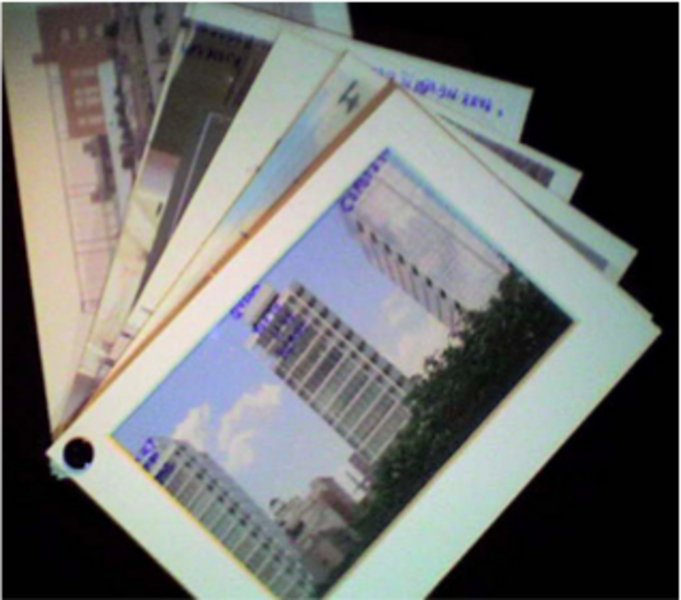 Thing That Might Have Happened (2006)Things That Might Have Happened is an exploration of the past, present and future of the Chelsea Piers, specifically Segment 4, from Horatio Street to Clarkson Street, including the highly contested Pier 45, or the Christopher Street Pier. As part of the Conflux festival exploring psychogeography in New York City, Richard James Supa Jr. and James Mayhew chose to explore the uses of the pier, both past and present, and how people feel about the changes being made and what, if any changes should come to the area. Things That Might Have Happened is a self-guided audio and visual tour allowing each participant to delve into various possibilities, suggestions, ideas and thoughts on the future of the piers. The viewer participant is even asked to suggest their own ideas as to what they believe are necessary for their enjoyment of the public space. Over 20 new proposals were made for the area and were hand drawn on transparency paper with a corresponding photo beneath the drawing to act as a map to different areas in and around the pier. Things That Might Have Happened hopes to become on ongoing discussion through the internet with space available for posts and blogging.
Thing That Might Have Happened (2006)Things That Might Have Happened is an exploration of the past, present and future of the Chelsea Piers, specifically Segment 4, from Horatio Street to Clarkson Street, including the highly contested Pier 45, or the Christopher Street Pier. As part of the Conflux festival exploring psychogeography in New York City, Richard James Supa Jr. and James Mayhew chose to explore the uses of the pier, both past and present, and how people feel about the changes being made and what, if any changes should come to the area. Things That Might Have Happened is a self-guided audio and visual tour allowing each participant to delve into various possibilities, suggestions, ideas and thoughts on the future of the piers. The viewer participant is even asked to suggest their own ideas as to what they believe are necessary for their enjoyment of the public space. Over 20 new proposals were made for the area and were hand drawn on transparency paper with a corresponding photo beneath the drawing to act as a map to different areas in and around the pier. Things That Might Have Happened hopes to become on ongoing discussion through the internet with space available for posts and blogging. -
Things That Have Probably Never Been Done Here Before (2009)Things That Have (Probably) Never Been Done Before was an experiment and open invitation to create new behaviors for the gallery space at Delaware County Community College. In an attempt to intervene with social behaviors in a gallery environment, participants were asked to create and document everyday micro-actions that they believed had not happened in the space before using index cards, a set of wireless surveillance cameras and recording device. Whether or not these actions had or had not occurred in this place is inconsequential- there is no way to prove or disprove the occurrence of these everyday actions previous to their documentation. Micro-actions that were submitted range from “No one has daydreamed here before” and “No one has looked to the future here before” to “No one has picked a wedgie here before”. What I find most interesting about these micro-actions is the wide range of personalities that are evident in each action.
-
 A Drill For Reimagining Wall Street (2009)A Drill For Reimagining Wall Street was a participatory drill at Conflux City that sought to reimagine the best-case scenario for Wall street both as a concept and a physical space, and to temporarily intervene with the tourist activity in the area. This project was perhaps a little ahead of it's time, and pre-dated the Occupy Movement. Special thanks to Shannon Allen, Liz Knafo and Liz Hodgson.
A Drill For Reimagining Wall Street (2009)A Drill For Reimagining Wall Street was a participatory drill at Conflux City that sought to reimagine the best-case scenario for Wall street both as a concept and a physical space, and to temporarily intervene with the tourist activity in the area. This project was perhaps a little ahead of it's time, and pre-dated the Occupy Movement. Special thanks to Shannon Allen, Liz Knafo and Liz Hodgson. -
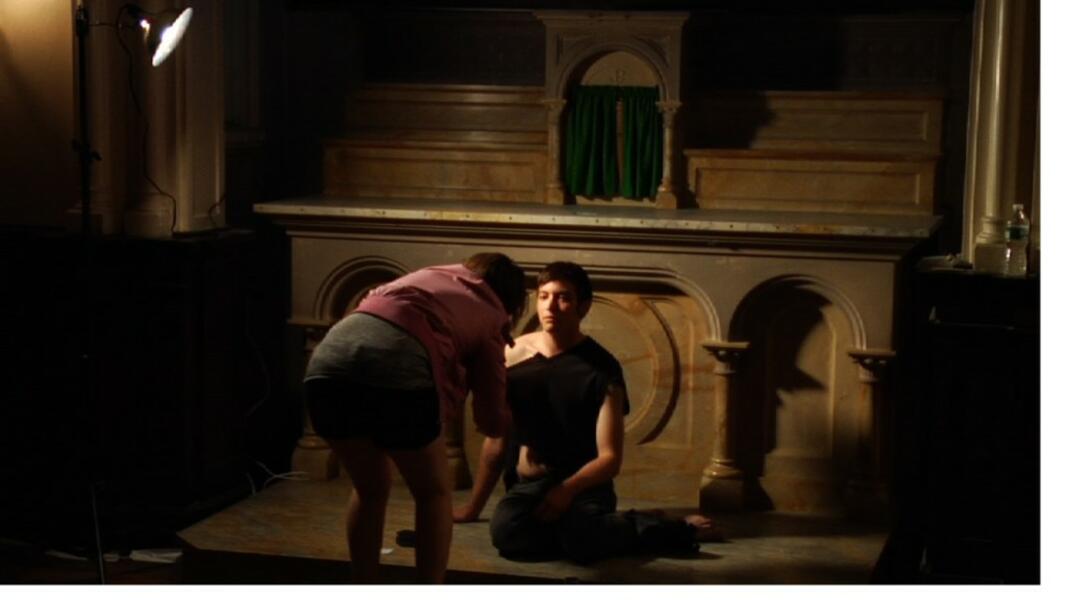 Cut Piece With Transgender Body (2010)This piece was performed on April 30, 2010 as a part of Hell, No!, curated by David Louis Fierman and RJ Supa at the Convent of St. Cecilia in Brooklyn, NY. Visitors to the convent were greeted at the entryway to the chapel by a docent who gave them a card with the following text: Cut Piece With Transgender Body (dedicated to Yoko Ono): Please use the scissors at the altar to cut his clothes away. Video and stills courtesy of Angie Young.
Cut Piece With Transgender Body (2010)This piece was performed on April 30, 2010 as a part of Hell, No!, curated by David Louis Fierman and RJ Supa at the Convent of St. Cecilia in Brooklyn, NY. Visitors to the convent were greeted at the entryway to the chapel by a docent who gave them a card with the following text: Cut Piece With Transgender Body (dedicated to Yoko Ono): Please use the scissors at the altar to cut his clothes away. Video and stills courtesy of Angie Young. -
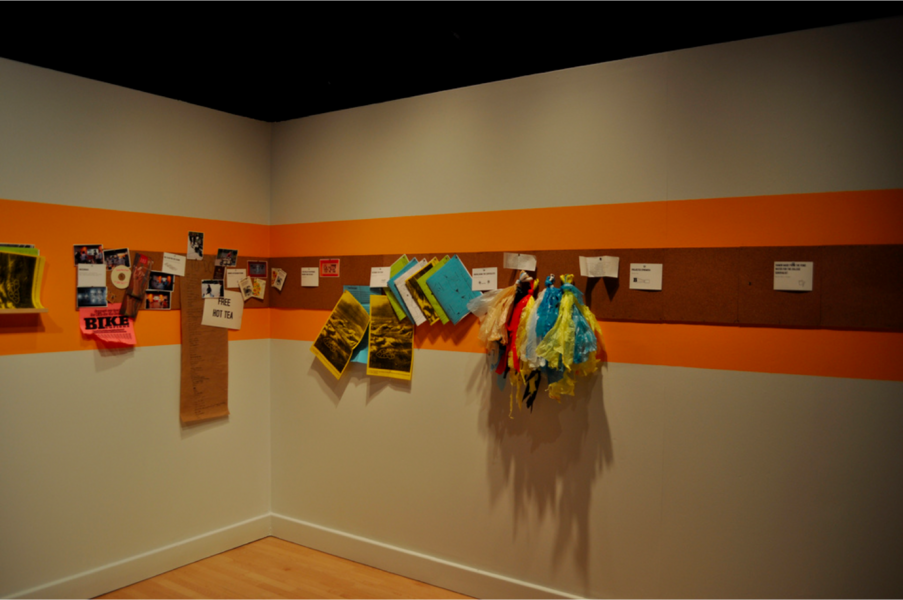 Accumulations/Temporary Occupations (detail) (2010)Accumulation/Temporary Occupations is a gallery installation and an organized series of events taking place from April 8-24, 2010 at University of Maryland, Baltimore County for my MFA Thesis Exhibition. In the gallery, stationary bikes were used to produce electrical power in the gallery that both illuminates a marquee sign and charges a battery. The battery, as an accumulation of power, was used to provide energy for a series of public, outdoor events that took place in the immediate area of the CADVC, and were organized by artists that I invited to be a part of the show.
Accumulations/Temporary Occupations (detail) (2010)Accumulation/Temporary Occupations is a gallery installation and an organized series of events taking place from April 8-24, 2010 at University of Maryland, Baltimore County for my MFA Thesis Exhibition. In the gallery, stationary bikes were used to produce electrical power in the gallery that both illuminates a marquee sign and charges a battery. The battery, as an accumulation of power, was used to provide energy for a series of public, outdoor events that took place in the immediate area of the CADVC, and were organized by artists that I invited to be a part of the show. -
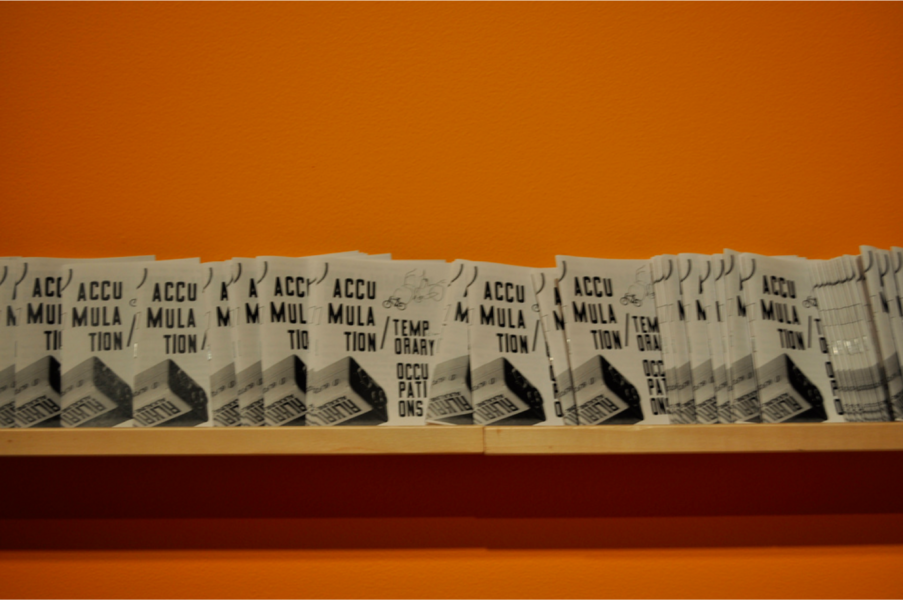 Accumulations/Temporary Occupations (detail) (2010)Accumulation/Temporary Occupations is a gallery installation and an organized series of events taking place from April 8-24, 2010 at University of Maryland, Baltimore County for my MFA Thesis Exhibition. In the gallery, stationary bikes were used to produce electrical power in the gallery that both illuminates a marquee sign and charges a battery. The battery, as an accumulation of power, was used to provide energy for a series of public, outdoor events that took place in the immediate area of the CADVC, and were organized by artists that I invited to be a part of the show.
Accumulations/Temporary Occupations (detail) (2010)Accumulation/Temporary Occupations is a gallery installation and an organized series of events taking place from April 8-24, 2010 at University of Maryland, Baltimore County for my MFA Thesis Exhibition. In the gallery, stationary bikes were used to produce electrical power in the gallery that both illuminates a marquee sign and charges a battery. The battery, as an accumulation of power, was used to provide energy for a series of public, outdoor events that took place in the immediate area of the CADVC, and were organized by artists that I invited to be a part of the show. -
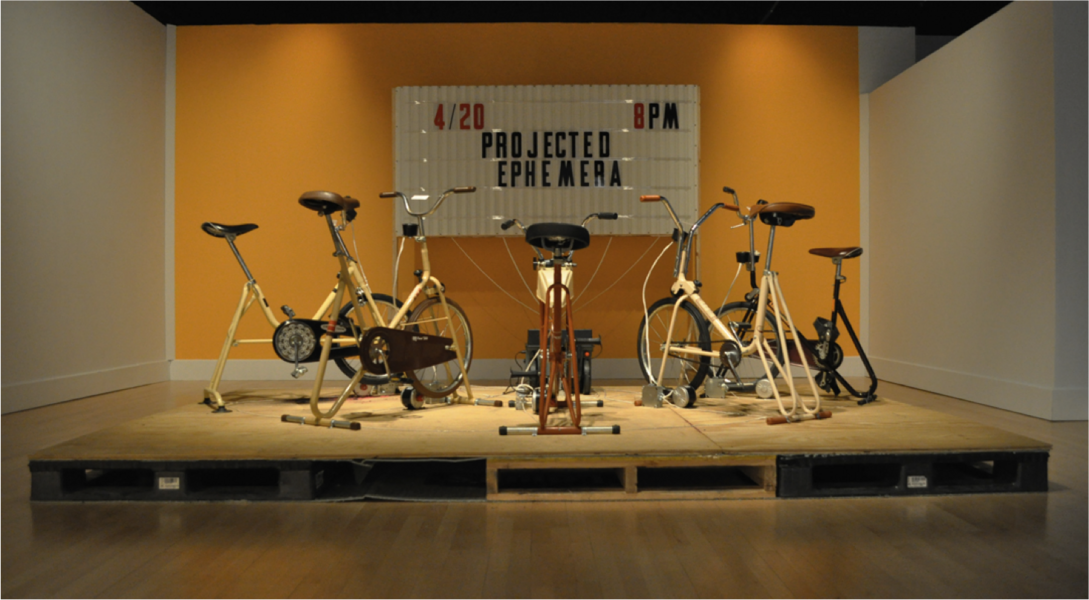 Accumulations/Temporary Occupations (detail) (2010)Accumulation/Temporary Occupations is a gallery installation and an organized series of events taking place from April 8-24, 2010 at University of Maryland, Baltimore County for my MFA Thesis Exhibition. In the gallery, stationary bikes were used to produce electrical power in the gallery that both illuminates a marquee sign and charges a battery. The battery, as an accumulation of power, was used to provide energy for a series of public, outdoor events that took place in the immediate area of the CADVC, and were organized by artists that I invited to be a part of the show.
Accumulations/Temporary Occupations (detail) (2010)Accumulation/Temporary Occupations is a gallery installation and an organized series of events taking place from April 8-24, 2010 at University of Maryland, Baltimore County for my MFA Thesis Exhibition. In the gallery, stationary bikes were used to produce electrical power in the gallery that both illuminates a marquee sign and charges a battery. The battery, as an accumulation of power, was used to provide energy for a series of public, outdoor events that took place in the immediate area of the CADVC, and were organized by artists that I invited to be a part of the show. -
Accumulations/Temporary Occupations (2010)Accumulation/Temporary Occupations is a gallery installation and an organized series of events taking place from April 8-24, 2010 at University of Maryland, Baltimore County for my MFA Thesis Exhibition. In the gallery, stationary bikes were used to produce electrical power in the gallery that both illuminates a marquee sign and charges a battery. The battery, as an accumulation of power, was used to provide energy for a series of public, outdoor events that took place in the immediate area of the CADVC, and were organized by artists that I invited to be a part of the show.
The Institute for Infinitely Small Things
I have been working with the Institute for Infinitely Small Things since 2005, and actually visited Baltimore for the first time to perform with the Institute at the 2005 Transmodern Festival. From the Institute's website:
The Institute for Infinitely Small Things conducts creative, participatory research that aims to temporarily transform public spaces and instigate dialogue about democracy, spatial justice and everyday life. The Institute’s projects use performance, conversation and unexpected interventions to investigate social and political “tiny things”. Based mostly in Boston, MA, and occasionally under the leadership of kanarinka, James Manning, Jaimes Mayhew, Forest Purnell or Nicole Siggins, the group’s membership is varied and interdisciplinary.
The Institute for Infinitely Small Things conducts creative, participatory research that aims to temporarily transform public spaces and instigate dialogue about democracy, spatial justice and everyday life. The Institute’s projects use performance, conversation and unexpected interventions to investigate social and political “tiny things”. Based mostly in Boston, MA, and occasionally under the leadership of kanarinka, James Manning, Jaimes Mayhew, Forest Purnell or Nicole Siggins, the group’s membership is varied and interdisciplinary.
-
 Corporate Commands: Enjoy Life (2005)Performances of corporate commands (ads in the imperative) where they occur in the urban landscape. We try to perform each command as literally as possible. There have been more than 15 performances of corporate commands in the U.S. and Canada in public and private urban spaces.
Corporate Commands: Enjoy Life (2005)Performances of corporate commands (ads in the imperative) where they occur in the urban landscape. We try to perform each command as literally as possible. There have been more than 15 performances of corporate commands in the U.S. and Canada in public and private urban spaces. -
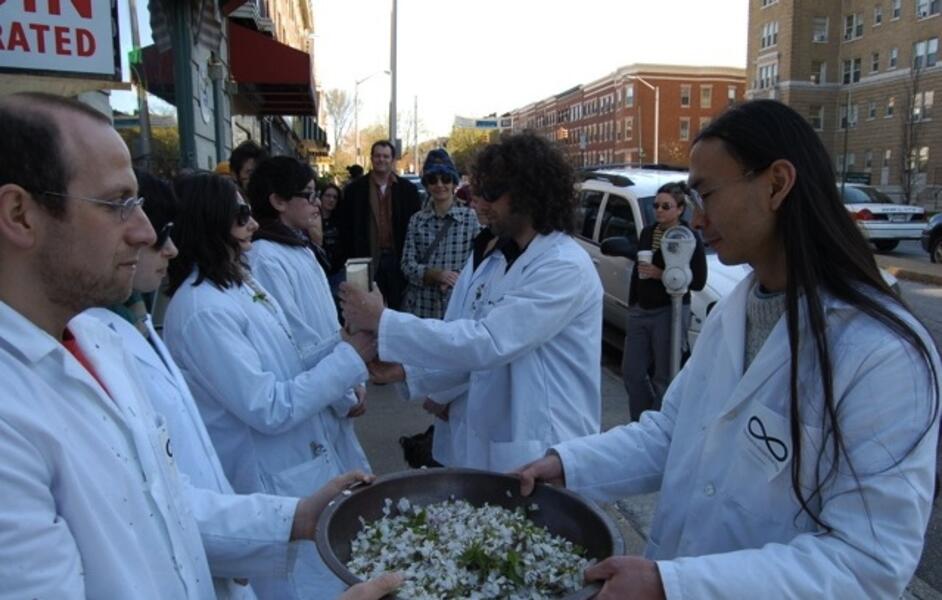 Corporate Commands: Say It With Flowers (2005)This performance took place near Eddie's Market in Baltimore as a part of the Transmodern Age Festival. Performances of corporate commands (ads in the imperative) where they occur in the urban landscape. We try to perform each command as literally as possible. There have been more than 15 performances of corporate commands in the U.S. and Canada in public and private urban spaces.
Corporate Commands: Say It With Flowers (2005)This performance took place near Eddie's Market in Baltimore as a part of the Transmodern Age Festival. Performances of corporate commands (ads in the imperative) where they occur in the urban landscape. We try to perform each command as literally as possible. There have been more than 15 performances of corporate commands in the U.S. and Canada in public and private urban spaces. -
 Corporate Commands: Say It With Flowers (2005)This performance took place near Eddie's Market in Baltimore as a part of the Transmodern Age Festival. Performances of corporate commands (ads in the imperative) where they occur in the urban landscape. We try to perform each command as literally as possible. There have been more than 15 performances of corporate commands in the U.S. and Canada in public and private urban spaces.
Corporate Commands: Say It With Flowers (2005)This performance took place near Eddie's Market in Baltimore as a part of the Transmodern Age Festival. Performances of corporate commands (ads in the imperative) where they occur in the urban landscape. We try to perform each command as literally as possible. There have been more than 15 performances of corporate commands in the U.S. and Canada in public and private urban spaces. -
Corporate Commands: Rollover (2004)Performances of corporate commands (ads in the imperative) where they occur in the urban landscape. We try to perform each command as literally as possible. There have been more than 15 performances of corporate commands in the U.S. and Canada in public and private urban spaces.
-
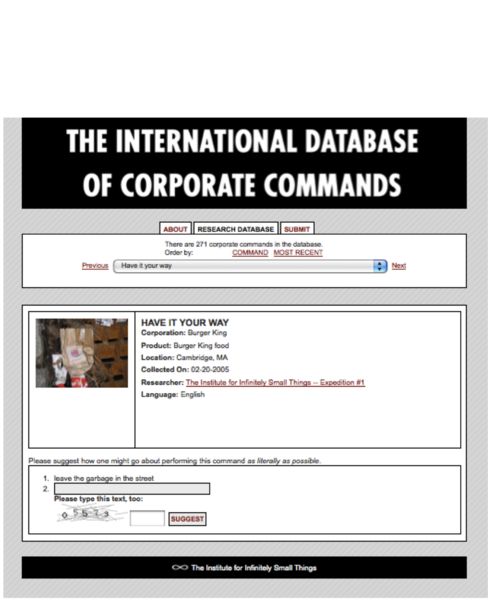 Corporate Commands2004 - present. Performances of corporate commands (ads in the imperative) where they occur in the urban landscape. We try to perform each command as literally as possible. There have been more than 15 performances of corporate commands in the U.S. and Canada in public and private urban spaces.
Corporate Commands2004 - present. Performances of corporate commands (ads in the imperative) where they occur in the urban landscape. We try to perform each command as literally as possible. There have been more than 15 performances of corporate commands in the U.S. and Canada in public and private urban spaces. -
57 Things To Do For Free in Harvard Square (2006)The Institute was commissioned to do a work for a public video screen in Harvard Square, an outdoor mall in Cambridge, MA. The resulting work is a video guidebook for tourists in Harvard Square which instructs them in 57 things they can do for fun, leisure and entertainment without spending any money. Shot and edited by Jaimes Mayhew and Nicole Siggins.
-
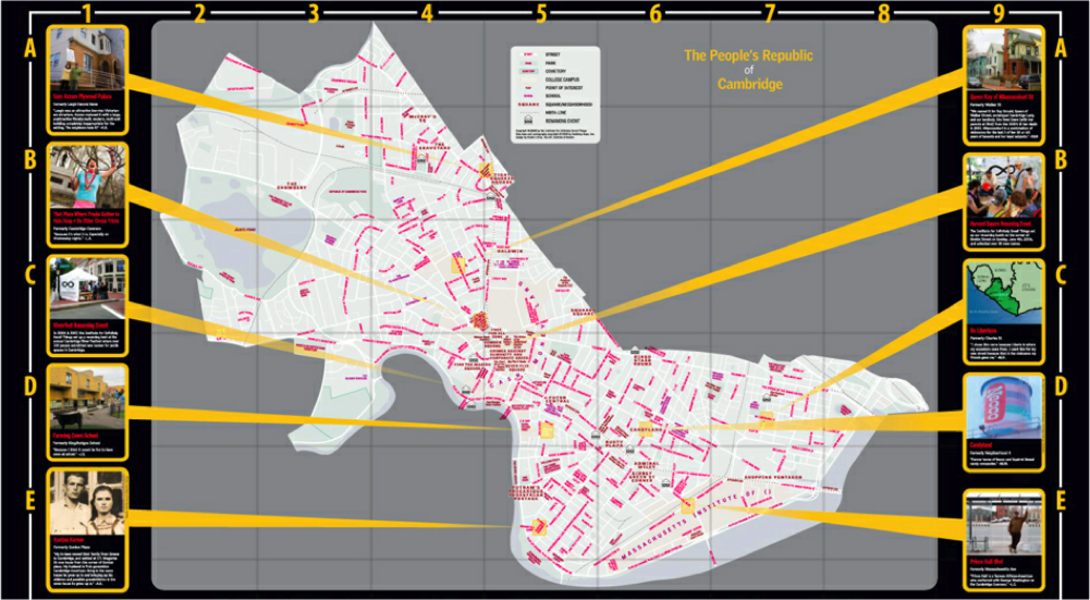 The City Formerly Known as Cambridge2006-8. What would the city look like if we could rename all of our public spaces, right now? The Institute invited members of the public to RENAME places in Cambridge, MA, for the 2008 publication of a new map of "The City Formerly Known as Cambridge".
The City Formerly Known as Cambridge2006-8. What would the city look like if we could rename all of our public spaces, right now? The Institute invited members of the public to RENAME places in Cambridge, MA, for the 2008 publication of a new map of "The City Formerly Known as Cambridge". -
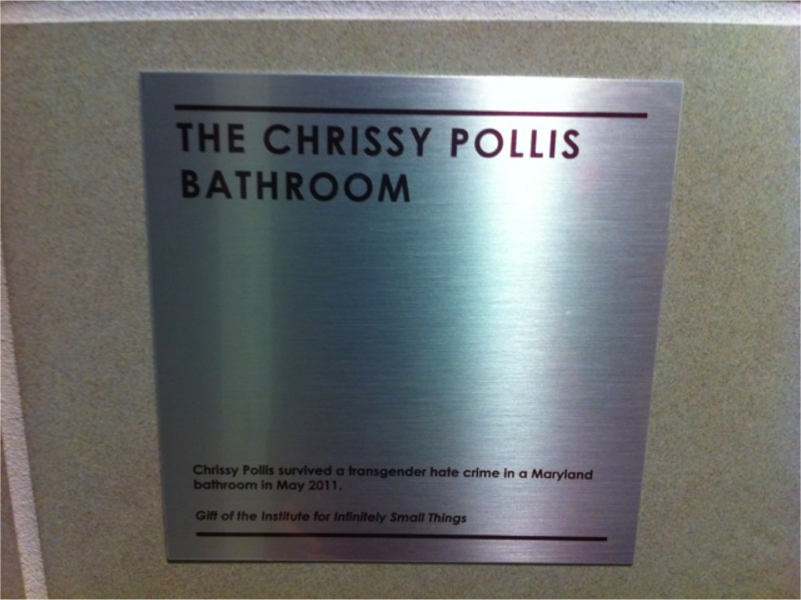 Transgender Bathroom Dedication2010. Transgender Bathroom Dedication dedicates bathrooms at MFA Boston to Chrissy Pollis and Dean Spade, both victims of transgender hate crimes that took plate in bathrooms in Maryland and New York, respectively. Transgender Dedication placards are available for purchase or loan to interested parties.
Transgender Bathroom Dedication2010. Transgender Bathroom Dedication dedicates bathrooms at MFA Boston to Chrissy Pollis and Dean Spade, both victims of transgender hate crimes that took plate in bathrooms in Maryland and New York, respectively. Transgender Dedication placards are available for purchase or loan to interested parties. -
 Failure Suppport Archive (screenshot)Art projects fail a lot, particularly those that are participatory, public and/or social. They fail for different reasons and cause myriad revelations. Nevertheless, the structures that we use to talk about these works and contexts where they are presented often don’t leave room for discussing the failures plainly and objectively. We’re interested in failure– in its relationship to creative production, artistic rhetoric and public presentation. We’re also interested in making work that does not fail as often by sharing our failures, and hearing yours through our Failure Archive and our Support Groups. The Failure Support Group project is run by members of The Institute For Infinitely Small Things. This project is inspired by a Failure Support Group event produced by Platform2 in Boston in 2008.
Failure Suppport Archive (screenshot)Art projects fail a lot, particularly those that are participatory, public and/or social. They fail for different reasons and cause myriad revelations. Nevertheless, the structures that we use to talk about these works and contexts where they are presented often don’t leave room for discussing the failures plainly and objectively. We’re interested in failure– in its relationship to creative production, artistic rhetoric and public presentation. We’re also interested in making work that does not fail as often by sharing our failures, and hearing yours through our Failure Archive and our Support Groups. The Failure Support Group project is run by members of The Institute For Infinitely Small Things. This project is inspired by a Failure Support Group event produced by Platform2 in Boston in 2008. -
 Failure Support GroupArt projects fail a lot, particularly those that are participatory, public and/or social. They fail for different reasons and cause myriad revelations. Nevertheless, the structures that we use to talk about these works and contexts where they are presented often don’t leave room for discussing the failures plainly and objectively. We’re interested in failure– in its relationship to creative production, artistic rhetoric and public presentation. We’re also interested in making work that does not fail as often by sharing our failures, and hearing yours through our Failure Archive and our Support Groups. The Failure Support Group project is run by members of The Institute For Infinitely Small Things. This project is inspired by a Failure Support Group event produced by Platform2 in Boston in 2008.
Failure Support GroupArt projects fail a lot, particularly those that are participatory, public and/or social. They fail for different reasons and cause myriad revelations. Nevertheless, the structures that we use to talk about these works and contexts where they are presented often don’t leave room for discussing the failures plainly and objectively. We’re interested in failure– in its relationship to creative production, artistic rhetoric and public presentation. We’re also interested in making work that does not fail as often by sharing our failures, and hearing yours through our Failure Archive and our Support Groups. The Failure Support Group project is run by members of The Institute For Infinitely Small Things. This project is inspired by a Failure Support Group event produced by Platform2 in Boston in 2008.
Autonomous Energy Mobile Research Lab (Iceland)
This is photo documentation of events that I hosted around Iceland with the Autonomous Energy Mobile Research Lab while on a Fulbright grant in the 2011-12 academic year. I used the mobile lab setup as a catalyst for conversations about electricity usage in Iceland, and collected stories on postcards.
-
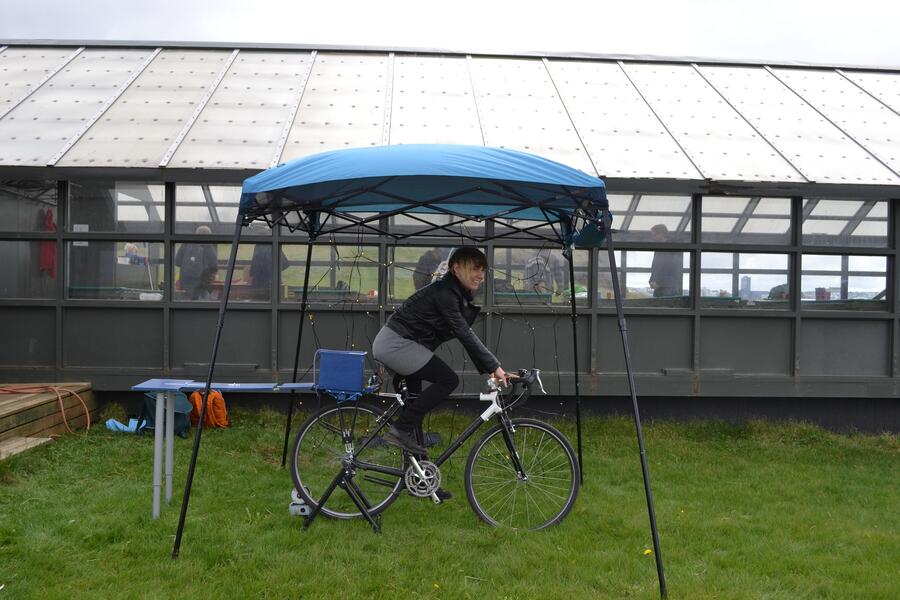 Videy Island, IcelandEvent for the Raflost Festival at Videy Island.
Videy Island, IcelandEvent for the Raflost Festival at Videy Island. -
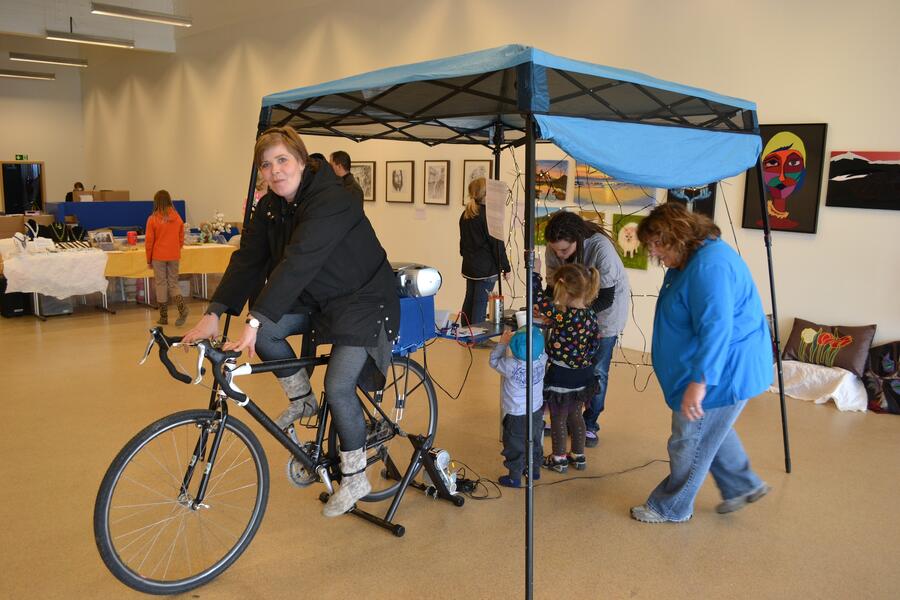 BorgarnesEvent at an opening reception for artists in southern Iceland.
BorgarnesEvent at an opening reception for artists in southern Iceland. -
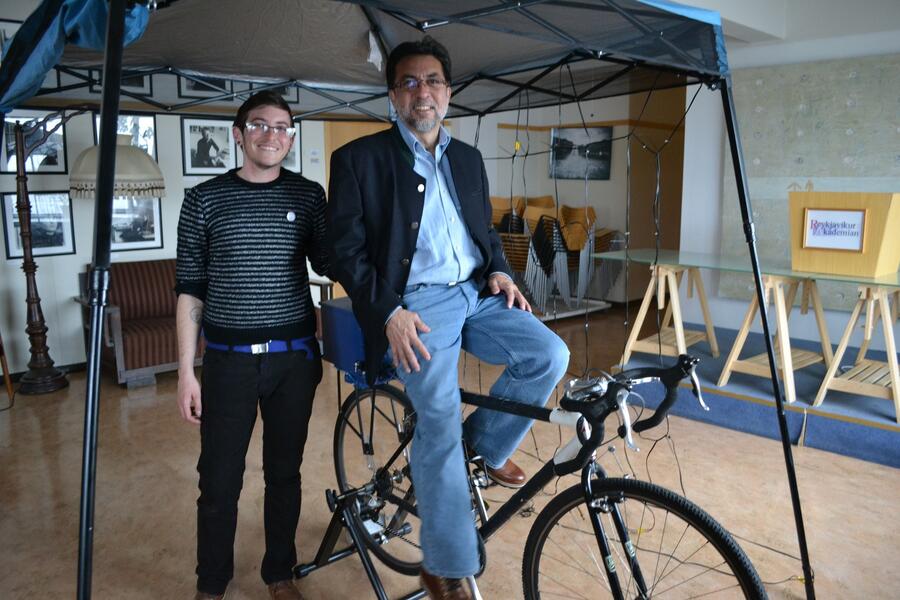 Hoffmannsgalleri?, Reykjavi?k, IcelandEvent for the opening reception of The Autonomous Energy Research Lab at Hoffmannsgalleri?.
Hoffmannsgalleri?, Reykjavi?k, IcelandEvent for the opening reception of The Autonomous Energy Research Lab at Hoffmannsgalleri?. -
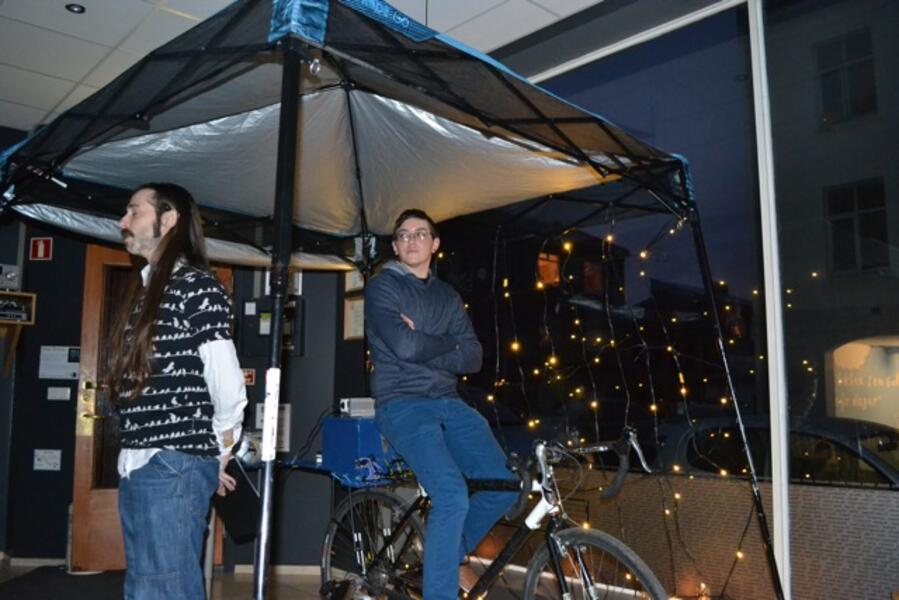 Earth Hour, Reykjavik Downtown HostelA one hour event where all lights were turned off. I powered small lights with my bicycle, and poet Elias Breixo read.
Earth Hour, Reykjavik Downtown HostelA one hour event where all lights were turned off. I powered small lights with my bicycle, and poet Elias Breixo read. -
 Menningarverkefnið Hlaðan, Vogar, IcelandEvent at a reception for an exhibition organized by Elinan Olohuone.
Menningarverkefnið Hlaðan, Vogar, IcelandEvent at a reception for an exhibition organized by Elinan Olohuone. -
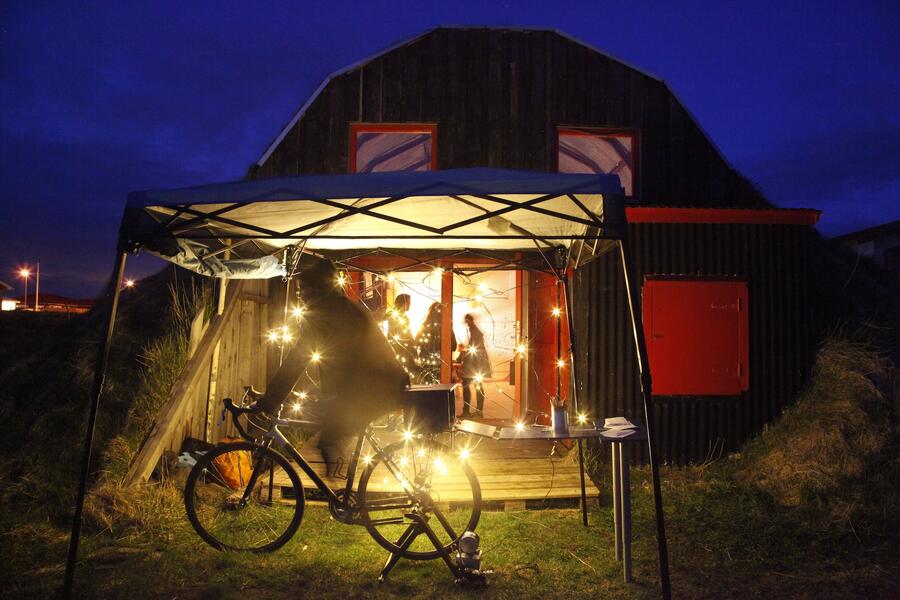 Menningarverkefnið Hlaðan, Vogar, IcelandEvent at a reception for an exhibition organized by Elinan Olohuone. Photo by Jessica Harvey
Menningarverkefnið Hlaðan, Vogar, IcelandEvent at a reception for an exhibition organized by Elinan Olohuone. Photo by Jessica Harvey -
 SIM, The Icelandic Association for Visual ArtistsEvent at an opening reception for artists in residence at SIM.
SIM, The Icelandic Association for Visual ArtistsEvent at an opening reception for artists in residence at SIM. -
 Earth Day, downtown Reykjavik, location #2Electricity generated with a bicycle was used to power a boom box and lights for a small reception by the sea with SEEDS Iceland.
Earth Day, downtown Reykjavik, location #2Electricity generated with a bicycle was used to power a boom box and lights for a small reception by the sea with SEEDS Iceland. -
 Earth Day, dowton ReykjavikStored bike-powered energy was used to power a sewing machine by activist Sonja Kovacevic to make cloth bags out of donated t-shirts.
Earth Day, dowton ReykjavikStored bike-powered energy was used to power a sewing machine by activist Sonja Kovacevic to make cloth bags out of donated t-shirts. -
 Earth Day, dowton ReykjavikStored bike-powered energy was used to power a sewing machine by activist Sonja Kovacevic to make cloth bags out of donated t-shirts.
Earth Day, dowton ReykjavikStored bike-powered energy was used to power a sewing machine by activist Sonja Kovacevic to make cloth bags out of donated t-shirts.
Energy Awareness Month
Energy Awareness Month was an exhibition organized by Jaimes Mayhew and the Autonomous Energy Research Lab, presented at Gallery CA in Baltimore, MD. explored electricity and our relationship with the production, consumption, and creative inspiration that can be drawn from it. The artists included were Jaimes Mayhew, Steve Bradley, Marian April Glebes, Tim Nohe and Services United. The exhibition ran from October 6-28, 2012.
This documentation includes work from all involved artists.
This documentation includes work from all involved artists.
-
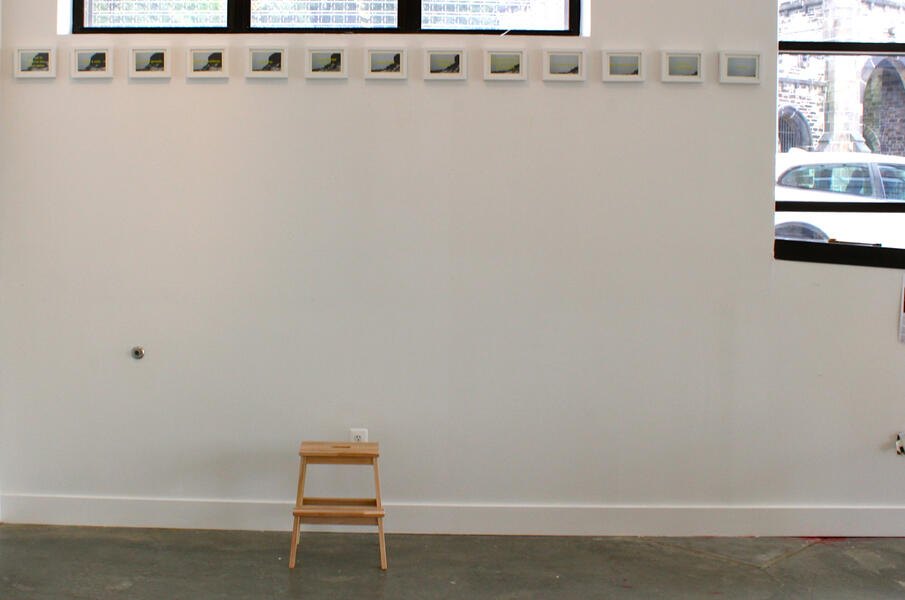 Ways To Change The Body/Land, The Autonomous Energy Research LabA series of photos that were taken out of a car window, hung just out of viewers' sight. Images are over-layed with text that instructs ways to change a body/land.
Ways To Change The Body/Land, The Autonomous Energy Research LabA series of photos that were taken out of a car window, hung just out of viewers' sight. Images are over-layed with text that instructs ways to change a body/land. -
 Ways To Change The Body/Land, The Autonomous Energy Research LabA series of photos that depict a performance of a slow crawl across a glacier, juxtaposed with text that instructs ways to change a body/land.
Ways To Change The Body/Land, The Autonomous Energy Research LabA series of photos that depict a performance of a slow crawl across a glacier, juxtaposed with text that instructs ways to change a body/land. -
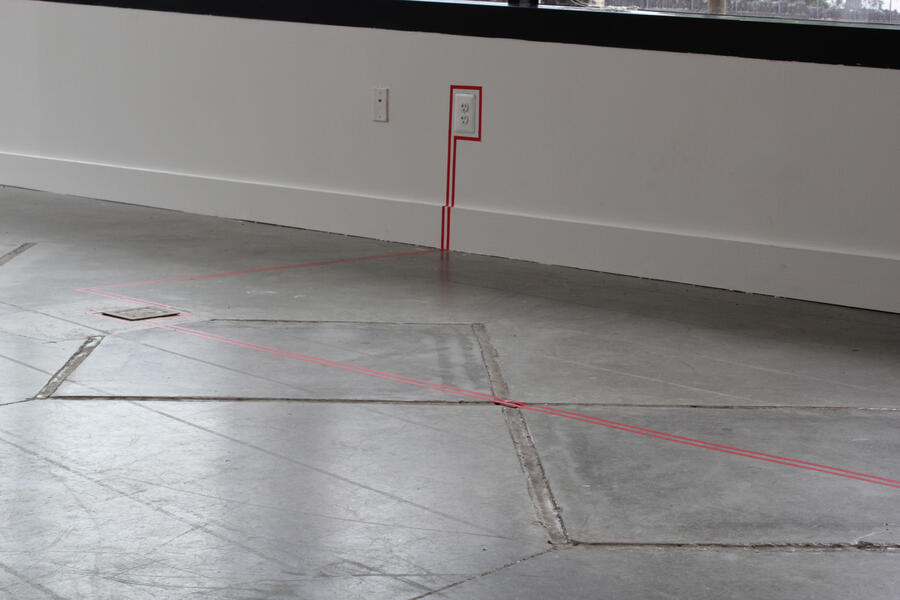 sold, services unitedAn outline of places where we get electricity, where it goes, and marking it's invisibility.
sold, services unitedAn outline of places where we get electricity, where it goes, and marking it's invisibility. -
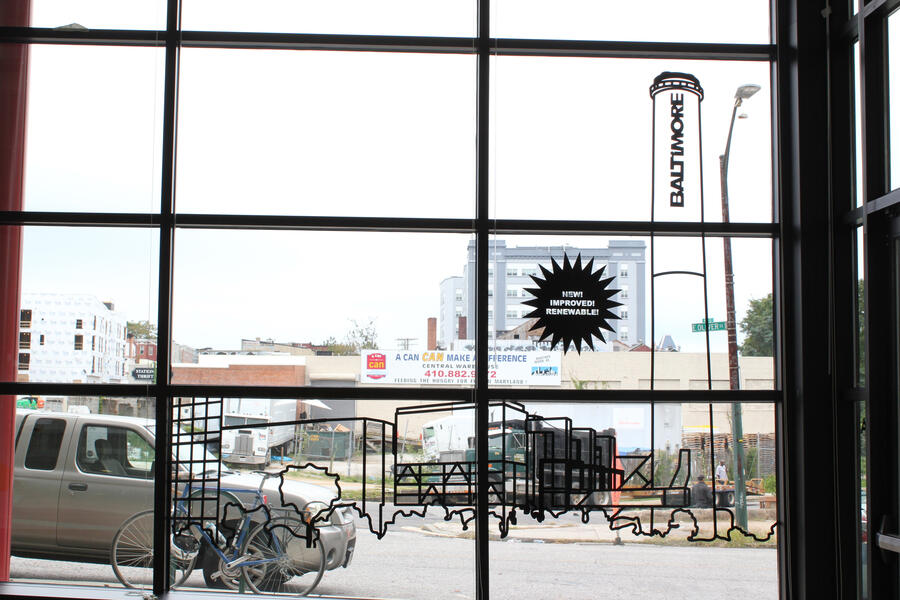 Semiotics (Baltimore RESCO trash incinerator)Materials: Vinyl cut of a digital drawing This trash incinerator was designated as a renewable source of energy in Maryland, because it runs on trash. This piece explores the strange logic of branding and greenwashing.
Semiotics (Baltimore RESCO trash incinerator)Materials: Vinyl cut of a digital drawing This trash incinerator was designated as a renewable source of energy in Maryland, because it runs on trash. This piece explores the strange logic of branding and greenwashing. -
 The Autonomous Energy Mobil Research Lab, Baltimore EditionMaterials: bike cart, wood, plexiglass, index cards, recipe box, table legs This is the Baltimore version of my mobile research lab, which has primarily been used to collect stories about electricity in Baltimore, as well as Boston. The lab is fully transportable by bicycle, and is bike powered.
The Autonomous Energy Mobil Research Lab, Baltimore EditionMaterials: bike cart, wood, plexiglass, index cards, recipe box, table legs This is the Baltimore version of my mobile research lab, which has primarily been used to collect stories about electricity in Baltimore, as well as Boston. The lab is fully transportable by bicycle, and is bike powered. -
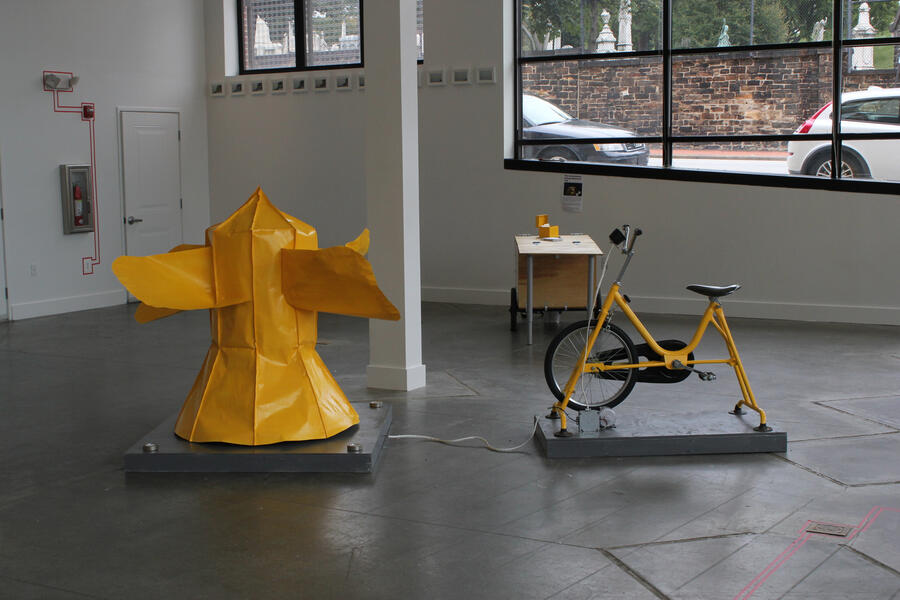 Paper Model of a HydroelectricTurbine, The Autonomous Energy Research LabMaterials: paper, thread, wood, spray paint, stationary bike, electromagnetic motor, wire, turntable The turbine turns when viewers pedal the bike. This is an inquiry into the deconceptualization of electricity production through a queer lens. We can make the turbine turn, but it produces nothing, and would be destroyed if it met water.
Paper Model of a HydroelectricTurbine, The Autonomous Energy Research LabMaterials: paper, thread, wood, spray paint, stationary bike, electromagnetic motor, wire, turntable The turbine turns when viewers pedal the bike. This is an inquiry into the deconceptualization of electricity production through a queer lens. We can make the turbine turn, but it produces nothing, and would be destroyed if it met water.
Relations (animated GIF series)
As a way to change relationships in imagery between landscapes and humans, this series of animated GIFs portrays relationships that have been "queered", or made strange. Each GIF produces power in ways that do not produce power, but because they are GIF images, they are always animated, looping quietly in the background.
-
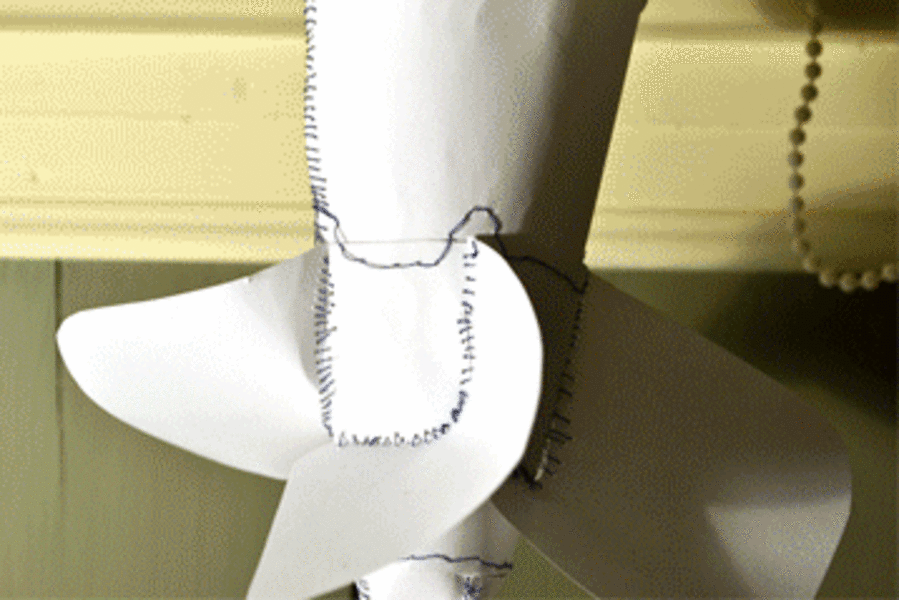 American Powered Paper Turbine (animated GIF)*click image to see animation* paper, thread This animation was shot in front of a window facing an Alcoa Aluminum smelter in Eskifjordur, Iceland, which is powered by a nearby, controversial hydro-electric powerstation.
American Powered Paper Turbine (animated GIF)*click image to see animation* paper, thread This animation was shot in front of a window facing an Alcoa Aluminum smelter in Eskifjordur, Iceland, which is powered by a nearby, controversial hydro-electric powerstation. -
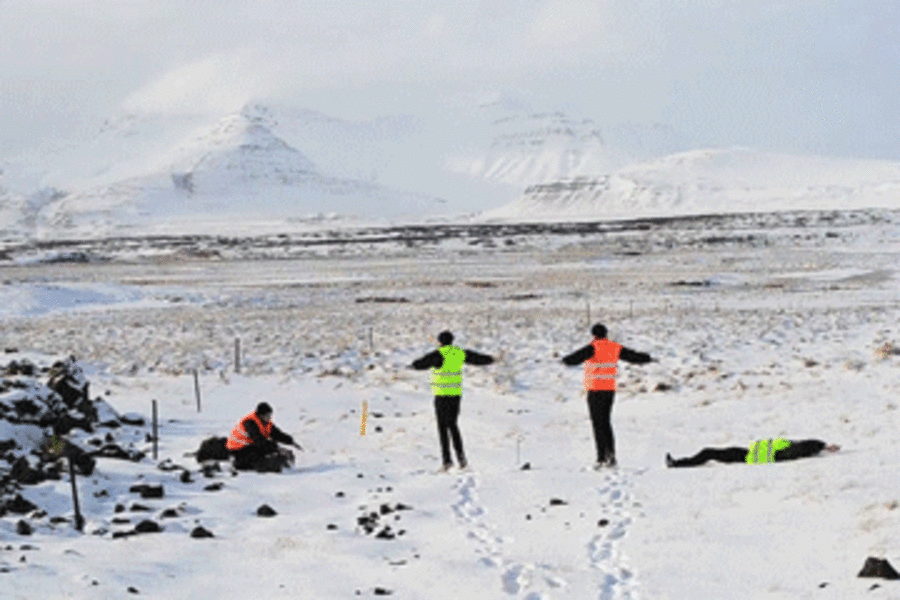 Relations: I Am Generating Power (animatedGIF)*click image to view animation" This is a video performance piece, in which I recorded each portion of a performance of energy production on separate layers of video to produce a looping, autonomous performance of power production.
Relations: I Am Generating Power (animatedGIF)*click image to view animation" This is a video performance piece, in which I recorded each portion of a performance of energy production on separate layers of video to produce a looping, autonomous performance of power production. -
 EnergyFromTheLand/EnergyForTheLand(animatedGIF)*click image to see GIF animation* In front of a geothermal electricity plant, I used my bicycle to produce electricity that powered a grow light, bringing light to the moss on the rocks in the dark Icelandic Winter.
EnergyFromTheLand/EnergyForTheLand(animatedGIF)*click image to see GIF animation* In front of a geothermal electricity plant, I used my bicycle to produce electricity that powered a grow light, bringing light to the moss on the rocks in the dark Icelandic Winter.
Post Landscape
These images are the result of using a technique that includes using photo software to auto-stitch images taken out of a window of a moving car. The results are manufactured landscapes made from images that were largely unplanned and spontaneous. The glitches in color and shape matching, paired with the moving perspective in these images creates disjunctions where towers float away in the sky, beautifully engineered structures stop and start at random in the desert landscape, and new logics of visual ecology are formed.
Ways To Change The Body/Land
Inspired by my experience as a transgender person from a family of geologists and ecologists, Ways To Change The Body/Land is a series of instruction works that describe ways that a body or landscape (a body/land) is changed in social, political, cultural, physical or ecological contexts. These instructions are abstract, and relate to the assigning of identity and use-value, inciting a call to action but not assigning the power that is needed to follow through. This leaves room for questions- if one wanted to change a body/land by assessing value, what kind of value should be assessed? Would taking out a life insurance policy assess value? Would estimating available resources assess value? All of these works seek to acknowledge the constant flux of a body/land in a perpetual state of becoming. Although I do not believe that landscapes and bodies are qualitatively the same, I believe that we assign meaning to both in similar ways.
I also send out instructions for changing a body/land on Twitter (@aerlab) and Facebook (The Autonomous Energy Research Lab).
I also send out instructions for changing a body/land on Twitter (@aerlab) and Facebook (The Autonomous Energy Research Lab).
Niagara Falls Without Water, 1969 + 2014
Applique quilt
6'8" x 10'
Applique quilt made with found fabrics based on a found image of Niagara Falls without water taken in 1969. Half of the electricity used to sew this quilt was produced in my studio with a stationary bicycle and a magnet motor. Produced with support from Provisions Library.
6'8" x 10'
Applique quilt made with found fabrics based on a found image of Niagara Falls without water taken in 1969. Half of the electricity used to sew this quilt was produced in my studio with a stationary bicycle and a magnet motor. Produced with support from Provisions Library.
Samesies Island Map
Colored pencil, pen on paper
Cartographer: Jaimes Mayhew
Surveyors: Bones, Mickey Dehn, Asa Keiswetter, Jaimes Mayhew, Jack Pinder
22"x30"
This is a pregnant seahorse-shaped map of an entirely imaginary place where transmen who date other transmen live in a separatist community. While none of the collaborators have any intention of actually building this community, we designed this map as an escapist exercise in which we re-imagined a world that was built for us, by us. The features on Samesies Island reflect the specific desires of our group, and we imagine that if this map were made with a different group of Samesies, many of the features would change. We hope that this map will inspire other marginalized people to imagine utopias, and will be taking this project in that direction in 2015.
This version of Samesies Island is complete with a sky bucket for public transport, a taco stand, beaches, Coney Island, Arches National Park, Canyonlands National Park, a free vet, two mountain ranges, Del LaGrace Volcano, narwhals, parrot fish, Billy Tipton recording studios, a couple dozen coves named after famous trans* masculine-of-center people, and many other features.
Prints of this map can be ordered from Society 6 (either large or extra large sizes are recommended) here: http://society6.com/jaimesmayhew/samesies-island_print#1=45
Cartographer: Jaimes Mayhew
Surveyors: Bones, Mickey Dehn, Asa Keiswetter, Jaimes Mayhew, Jack Pinder
22"x30"
This is a pregnant seahorse-shaped map of an entirely imaginary place where transmen who date other transmen live in a separatist community. While none of the collaborators have any intention of actually building this community, we designed this map as an escapist exercise in which we re-imagined a world that was built for us, by us. The features on Samesies Island reflect the specific desires of our group, and we imagine that if this map were made with a different group of Samesies, many of the features would change. We hope that this map will inspire other marginalized people to imagine utopias, and will be taking this project in that direction in 2015.
This version of Samesies Island is complete with a sky bucket for public transport, a taco stand, beaches, Coney Island, Arches National Park, Canyonlands National Park, a free vet, two mountain ranges, Del LaGrace Volcano, narwhals, parrot fish, Billy Tipton recording studios, a couple dozen coves named after famous trans* masculine-of-center people, and many other features.
Prints of this map can be ordered from Society 6 (either large or extra large sizes are recommended) here: http://society6.com/jaimesmayhew/samesies-island_print#1=45
The Wave of Mutilation Monument at Samesies Island Visitors Center
The Wave of Mutilation is a semi–permanent wave off of the coast of Samesies Island. The wave appeared when a group of transmen decided to set sea in search of utopia, and were carried to an area of sea trash that they constructed in the shape of a pregnant seahorse to form Samesies Island. Once believed to be the only means to arrive on Samsies Island, theWave of Mutilation is now understood to be a myth. It is notable that variations of the Samesies myth of The Wave of Mutilation exist across many gender variant communities, This monument stands as a permanentreminder of the reclamation of the very idea of mutilation, and the variety of ways that Samesies can healthily arrive in utopia.










